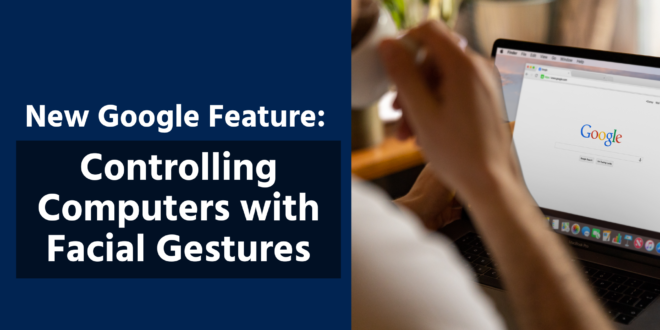Google continues to innovate with technologies that make our daily lives smarter and more convenient. One of their latest breakthroughs is a feature that allows users to control their computers using facial gestures—a revolutionary step in enhancing user experience, especially for people with disabilities or special needs.
What is the Facial Gesture Control Feature?
This feature relies on advanced facial movement tracking technology using front-facing cameras on laptops or smart devices. Users can now perform various commands like navigating pages, opening applications, or even typing using simple facial gestures such as raising an eyebrow, smiling, or tilting their head.
How Does the Technology Work?
- Gesture Recognition: It employs AI algorithms that accurately and quickly learn and recognize various facial gestures.
- Front-Facing Camera: The camera is used as the primary tool to capture facial movements and convert them into actionable commands on the device.
- Custom Settings: Users can customize gestures according to their preferences, making the feature adaptable to individual needs.
Key Benefits:
- Improved Accessibility: A game-changer for individuals with mobility challenges, offering them a hands-free way to control devices.
- Enhanced Productivity: Helps users complete tasks faster using quick and simple gestures.
- Innovative Experience: Adds a cutting-edge dimension to human-device interaction, making technology usage more engaging.
Potential Applications:
- At Work: Simplifies navigation between apps and tasks during meetings or presentations.
- In Education: Supports students with mobility impairments, enabling seamless interaction with educational materials.
- For Entertainment: Allows users to control games or play videos hands-free.
Challenges:
Despite its benefits, this technology may face some hurdles, such as:
- Gesture Accuracy: Factors like lighting conditions or imperfect angles might affect gesture recognition accuracy.
- Device Requirements: High-quality cameras and powerful devices are needed for optimal performance.
- Privacy Concerns: Could raise questions about safeguarding users’ personal data.
Google’s Future Plans:
Google aims to expand this feature across a wider range of devices and systems. They are also working on improving gesture recognition accuracy and providing advanced security options to protect user data.
The facial gesture control feature is another step toward making technology more inclusive and user-friendly. Google continues to demonstrate its commitment to improving lives through continuous innovation.
 Expert Advise Your Trusted Guide to Smarter Decisions
Expert Advise Your Trusted Guide to Smarter Decisions
